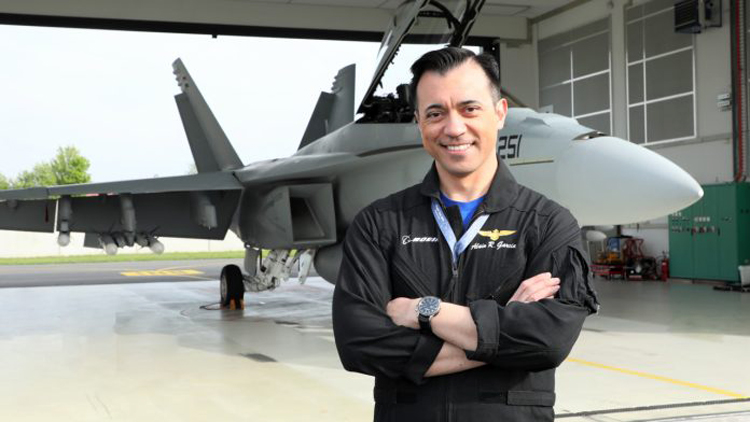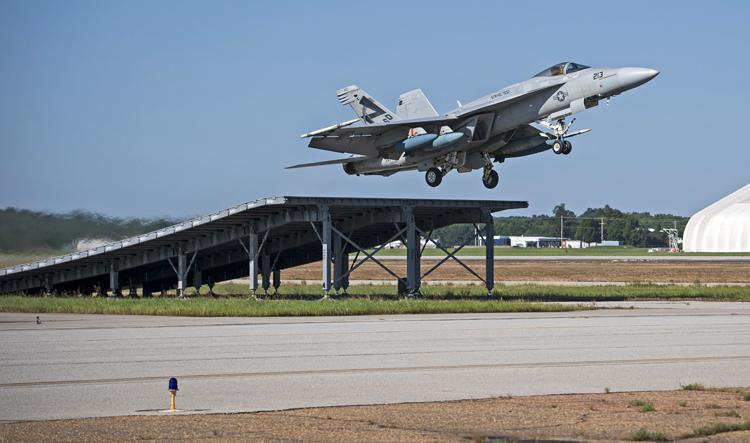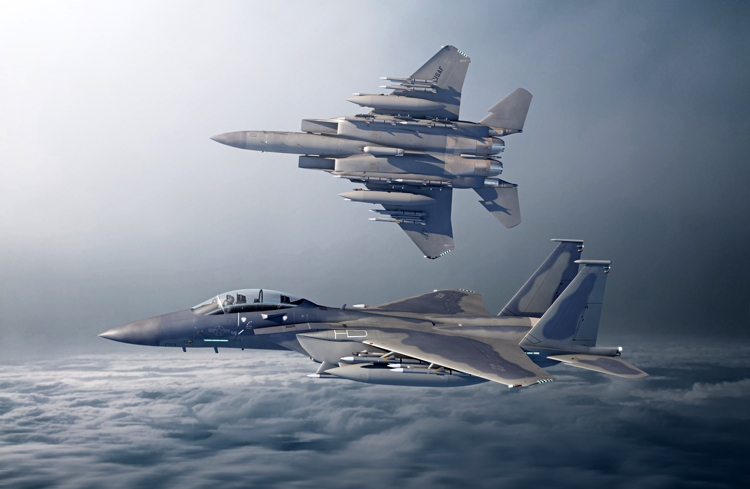INDIAN ARMED FORCES CHIEFS ON
OUR RELENTLESS AND FOCUSED PUBLISHING EFFORTS

SP Guide Publications puts forth a well compiled articulation of issues, pursuits and accomplishments of the Indian Army, over the years

I am confident that SP Guide Publications would continue to inform, inspire and influence.

My compliments to SP Guide Publications for informative and credible reportage on contemporary aerospace issues over the past six decades.
“We want to bring the best of Boeing to India and export the best of India to the world”
Alain Garcia, Vice President, India Business Development, Boeing Defense, Space & Security in talks with SP's Aviation on Boeing's continued engagement with the Armed Forces and the Aerospace industry in India

SP’s Aviation (SP’s): Tell us about Boeing’s association with India and how do you perceive thedefence business progress in India? Also, tell us what kind of future Boeing is aiming for, with India and its armed forces?
Alain Garcia (Garcia): Boeing has been a strong and trusted partner in the mission readiness and modernisation of India’s defence forces. Our proven portfolio of products and services offer unmatched operational capability across the entire mission spectrum.
India is one of the largest marketsfor Boeing globally – and a country where we’ve been honored to achieve many firsts with our Indian partners. Through the Indian Navy (IN), India was the first international customer for the P-8I maritime patrol aircraft. India is also the largest operator of C-17 cargo and transport aircraft outside the United States, and the Harpoon missile was the first weapon system integrated on an Indian designed and built fighter (Jaguar). If we start with a quick lookback at the last five years, Boeing has accelerated growth in India with a razor-sharp focus on the key areas of:
- Customer engagement – meeting the IN and Indian Air Force’s (IAF) modernisation and mission-readiness needs
- Services growth – localisation of our services, and the value Boeing Defence India, our local establishment in India, is able to provide through the lifecycle of platforms offered
- Supplier expansion – building an indigenous and robust supplier-partner network with a focus on Aatmanirbhar Bharat
This partnership has been growing incrementally every year with the deliveries of the C-17 Globemasters, the AH-64E Apaches and the CH-47(I) Chinooks to the IAF, and the P-8Is to the IN. In 2020, the Ministry of Defence signed a contract for the acquisition of an additional six Apaches for the Indian Army.
Today, India is at the front and center of significant opportunities for Boeing. In addition to our response to the IN’s Multi-Role Carrier Borne Fighter(MRCBF) with the F/A-18 Super HornetBlock III, there are several other opportunities we are pursuing here in India. We are also engaged with the IAF on their requirement for Multi-Role Fighter Aircraft (MRFA). The F-15EX will excel as a candidate in India’s MRFA program. Given the contemporary sensors and radar, advanced cockpit, range, endurance, speed and payload capacity, the F-15EX brings capabilities that no other fighter aircraft can offer.
Additionally, as the IAF further shapes its defence capabilities, the KC-46 is the perfect choice for a multi-role tanker-transport aircraft for appropriate mid-air refueling capability. The new KC-46 is designed from the ground-up to be a combat-ready tanker. We also believe that India has requirements for more P-8Is, Apaches and Chinooks, and we stand ready to support them.
Through Boeing Defence India (BDI), we are delivering services that ensure high availability of our customers’ fleets at competitive costs. We are seeing the growth of our services business and with it, the value Boeing is able to provide through product lifecycle support. Another area of our services commitment is the investments we’ve made in infrastructure, the build-up of local capability, the workforce and local partnerships that are all accelerating our strategy to provide lifecycle value to our customers in India.Our focus is to help build a strong indigenous Indian aerospace and defence ecosystem, and invest in partnerships and talent to contribute to the vision of an Atmanirbhar Bharat. We want to bring the best of Boeing to India and export the best of India to the world.
SP’s: How would you advocate the capabilities of F/A-18 Super Hornet Block III for India’s carrier-based fighters’ programme?
Garcia: The F/A-18 Super Hornet Block III will be a transformative capability for the IN for their requirement of MRCBF. With the Super Hornet, IN will get the most advanced and lethal platform while benefiting from the tactics, upgrades and knowledge related to the U.S. naval aviation ecosystem. The Block III configuration is suited to protect India’s maritime interests as it’s built to meet the broadest range of missions while benefiting from the upgrades and knowledge related to U.S. naval aviation. We anticipate the Super Hornet opening up opportunities for greater interoperability between the two navies for a secure Indo-Pacific.

Boeing has conducted several studies over the last couple of years, including the ski-jump tests at U.S. Navy facility in Patuxent River that demonstrate that the F/A-18 Super Hornet is fully compatible with IN carriers. The F/A-18 Super Hornet was specifically designed, from its inception, for carrier operations. Another important fact to note is that the two-seater carrier compatible variant of the Super Hornet offers several unique advantages to the IN. Talking of those advantages – one, the two-seater can help impart carrier qualification training onboard the carrier rather than just ashore making pilot conversion much safer; two, given that the two-seaters can operate from aboard the carrier for combat roles, this would make the entire inventory available to the IN onboard their carrier(s) rather than the two-seaters just sitting ashore in the hangars when the carrier sails to address a crisis.
Further, our sustainment program,“For India, by India” is built on the success of existing programs that Boeing is executing for the IAF and the IN today, that includes the C-17, P-8I, Head of State aircraft, Chinooks and Apaches. These programs will enable us to develop select capabilities to sustain the Super Hornet out of India. The Super Hornet is powered by same family of engines powering India’s indigenous Light Combat Aircraft inducted by the IAF. The commonality in engines would create scale efficiencies for potential sustainment opportunities in India in the future.
All of this together, makes the F/A-18 Block III Super Hornet a unique fit for the IN.
SP’s: What makes the F-15EX the right choice for the IAF?
Garcia: The F-15EX is the latest and most advanced version of combat-proven, all-weather day/night F-15 aircraft family. Given the contemporary sensors and radar, advanced cockpit and range, and speed and payload capacity, the F-15EX brings capabilities that no other fighter aircraft can offer. It offers affordability, speed, range, heavy-weapon payload and the ability to rapidly integrate new technology into a fighter aircraft.

The F-15EX brings fly-by-wire flight controls, an all-glass digital cockpit and the latest mission systems and software capabilities, as well as the ability to carry advanced hypersonic weapons. The aircraft brings new concepts to survivability beyond low observability, such as state-of-the-art electronic warfare suite, which allows it to operate in highly contested air space. It is equipped with contemporary sensors, avionics, and weapons to bring disruptive and decisive effects to a peer fight.
The F-15EX is setting records as the first U.S. Air Force aircraft to be completely tested and fielded through combined Developmental and Operational Test. The first two aircraft were delivered ahead of schedule and participated in advanced exercises weeks later, achieving impressive results against sophisticated threats. Additionally, the U.S. Air Force has contracted Boeing for increasing quantities of aircraft each year and factory production is being increased to domestic and international meet demand. Boeing is committed to increasing rate in the factory to meet the U.S. Air Force requirements for F-15EX and new demands from our international customers.
SP’s: Do you see foresee future Apache and Chinook requirements?
Garcia: The Apache and Chinook represent the best of high-performing attack and heavy lift helicopter technologies from Boeing that will strengthen India's defence capabilities across a range of military and humanitarian missions in the years to come. Boeing completed the delivery of all 22 Apache and 15 Chinook military helicopters to the IAF and is fully committed to meeting the operational needs of the Indian armed forces. We do believe that India has requirements for more Apaches and Chinooks, and we stand ready to support them.
SP’s: India is yet tofinalise its air-to-air refueling aircraft (FRA).Would you like to elaborate on some of the key features of the same? Do you have any plans for KC-46 for India?
Garcia: Boeing’s KC-46A Pegasus tanker offers a distinct advantage to the U.S. Air Force (USAF) and air forces of other nations. The air-refueling platform by Boeing is enabling the USAF to provide in-flight refueling services to bombers, fighters, airlifters, surveillance aircraft, and other aircraft flown by the U.S. military.
The KC-46 has the lowest life-cycle costs of any of its current competitors in the market, making it the most efficient tanker available today. The aircraft can be rapidly reconfigured in two hours for any mission -- carrying passengers, cargo, aeromedical or any combination of the three, while still performing its main air refueling role. With its unique main cargo deck door, the KC-46 has more than 11,000 cubic feet of cargo space to accommodate up to 18 full-size 463L pallets, which is more than any other tanker aircraft. It also has a fully integrated capability that enables crews to perform aeromedical evacuation on any flight.
It can refuel bothprobe-and-drogue as well as boom receptacle receiver aircraft on any sortie. It utilises 21st century centerline and wing-mountedprobe and drogue systems as well as an advanced sixth-generation fly-by-wire boom. Simultaneous air refueling of two fighter aircraft is supported through Wing Air Refueling Pods (WARPs). In addition, the KC-46A is already certified to refuel numerous receiver types, including the C-17 Globemaster III, F-15 Eagle; and has a program plan for full certification on all receivers compatible with international refueling standards – notably including the P-8 Poseidon in the near future.
That means the KC-46 can refuel the IAF fleet on day one. From refueling India’s front-line fighter force to direct support of its C-17 fleet, the KC-46 enables allied and coalition refueling of all fixed-wing receiver aircraft anytime, on every mission, including simultaneous multi-point refueling.
With the IAF intending to convert itself into an expeditionary force, the air refueler is believed to be a necessity in the coming years. The IAF has already taken decisions to increase its operational reach by deciding to enable all its aircraft and helicopters for combat and support role for mid-air refueling.
The most reliable and economical tanker to operate, the KC-46 will provide India with the combat capability it needs for sovereign operations and will also serve as an aircraft to move personnel and material. Pegasus is the best choice for today and the decades to come.
SP’s: Indian Army signed for 6 Apaches in 2020. How is the progress on this front?
Garcia: The world’s most advanced attack helicopters, the Apaches, will be force multipliers for the Indian Army, just as they are today for the IAF, and will arrive in country in early 2024. The fuselage for the Indian Army Apaches will be built at the state-of-the-art Tata Boeing Aerospace Ltd. (TBAL) manufacturing facility right here in Hyderabad, India. This world class facility is also a critical centerpiece and source of Apache manufacturing for the U.S. Army and customers worldwide.
SP’s: We do notice that C-17 has been very actively into action for the host of missions. How do you feel about this?
Garcia: It is our honor to support the IAF’s C-17 fleet, keep them mission ready and maintainthe serviceability of its fleet. We are pleased to see its active involvement across a range of IAF’s missions. Boeing is supporting the IAF C-17 fleet under the Globemaster Integrated Support Program (GISP) and has been maintaining the fleet through techno-logistics support and training for aircrew that operate the platform. The C-17 fleet has maintained high serviceability rates since its induction. Boeing is also responsible for maintenance, field support services, modifications and upgrades, technical manual support and logistics engineering services. The IAF’s C-17 fleet, since their induction in 2013, have logged more than 31,000 flight hours. Boeing’s C-17 simulator training center provides training services to the IAF and has completed thousands of training hours for aircrews and loadmasters for the IAF.
The C-17 is the world’s premier heavy-lift aircraft and will continue to prove itself as a versatile strategic airlifter in future operations to come.
SP’s: P-8I has also been quite active on various missions, as has been the case with IAF’s C-17. How do you view this?
Garcia: The IN was the first and is the second largest P-8 customer outside of the United States. The P-8I’s unmatched maritime surveillance and anti-submarine warfare capabilities, versatility and operational readiness are uniquely qualified to perform a wide range of missions across the Indian Ocean Region.The P-8I has proven to be an important asset to the IN. Our focus has been, and will continue to be, towards delivering the world’s best maritime patrol and anti-submarine warfare aircraft to the IN.
We recently delivered the 12th P-8I to the Navy, the fourth aircraft to be delivered under an option contract for four additional aircraft that the Ministry of Defence awarded in 2016. Boeing also supports India’s P-8I fleet through our services business by providing performance-based logistics, spares, ground support equipment, as well as field service representative and on-site engineering support. Our integrated logistics support has enabled the highest state of fleet readiness.
SP’s: Can you tell us about your defence supply chain partners?
Garcia: Indian suppliers are an integral part of Boeing’s strategy for growth, and are key to our commitment to strengthening India’s aerospace industry. Our supplier base in India continues to grow and today we have more than 275 suppliers from India who are part of the global supply chain and are manufacturing critical systems and components that go into some of Boeing’s most advanced aircraft. /p>
There are several examples where our Indian partners are global suppliers of critical parts on Boeing’s defence airplanes. We are developing Micro, Small and Medium Enterprises (MSMEs) in support of our commitment to Aatmanirbhar Bharat. In fact, 26 percent of our suppliers from India are MSMEs.
Our industrial partners here are raising the bar to deliver world-class quality, cost-efficiency, and productivity, as they become an important part of the company’s supply chain for some of the most advanced platforms in the world. For instance:
- Our joint venture with Tata, Tata Boeing Aerospace Limited (TBAL), in Hyderabad, is producing aero-structures for Boeing’s Apache helicopter, including fuselages, secondary structures and vertical spar boxes for Indian and global customers. Apache fuselages and structures made in this cutting-edge factory in Hyderabad are for customers around the world, including the U.S. Army.
- Dynamatic Technologies manufactures the ramp and complex aft pylon for Chinook heavy-lift helicopters. Dynamatic Technologies was also recently awarded a contract for manufacturing assemblies for Boeing’s newest tactical fighter, F-15EX Eagle II. This is a first where aerostructures for the latest and most advanced F-15EX Eagle II will be made in India.
- SASMOS HET Technologies manufactures electrical panel assemblies for the F/A-18 Super Hornet and F-15 Strike Eagle
- Hindustan Aeronautics Ltd (HAL) manufactures F/A-18 gun bay doors and recently completed delivery of the 200th gun bay door
- Bharat Electronics Limited (BEL) manufactures IFF (Identify Friend/Foe) and speech secrecy systems for the P-8
We are also leveraging the Indian industrial base for local capabilities including supply of indigenous equipment on the P-8I and repair of critical components. With Air Works Group, we have been successfully addressing heavy maintenance checks for the P-8I in the country. Further capability development planning is in progress to support the growing P-8I fleet, improving the local aviation ecosystem while ensuring quicker turnaround for the IN.
We are continuously investing in local capacity-building as well as collaborations with Indian organisations across manufacturing, infrastructure, engineering services, research and technology, training, and skills development. These collaborative programs are developing the skilled and trained workforce in India needed to build an ecosystem conducive to business success. Our Indian suppliers are our partners in the journey towards Atmanirbhar Bharat and in making India a key hub for aerospace and defence manufacturing for the world.
SP’s: Would you like to share any upcoming important futuristic programs and their details with us?
Garcia: Boeing is honored to support India’s armed forces on multiple programs today. We stand ready to support all future requirements to provide proven, capable, and innovative products and services that Boeing can offer.





